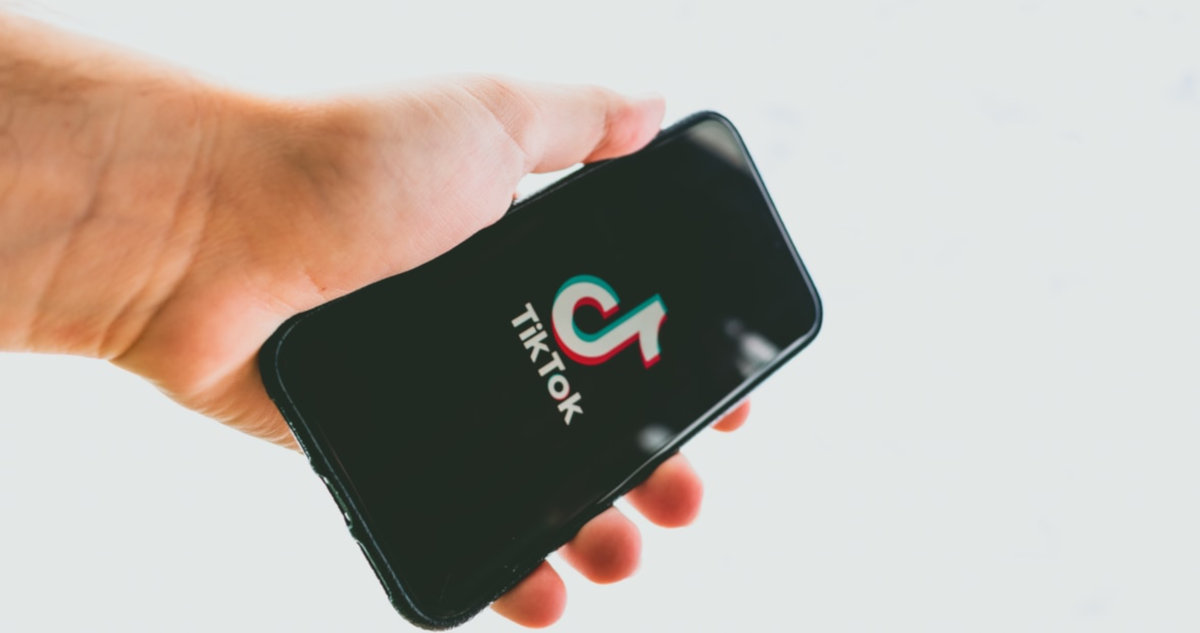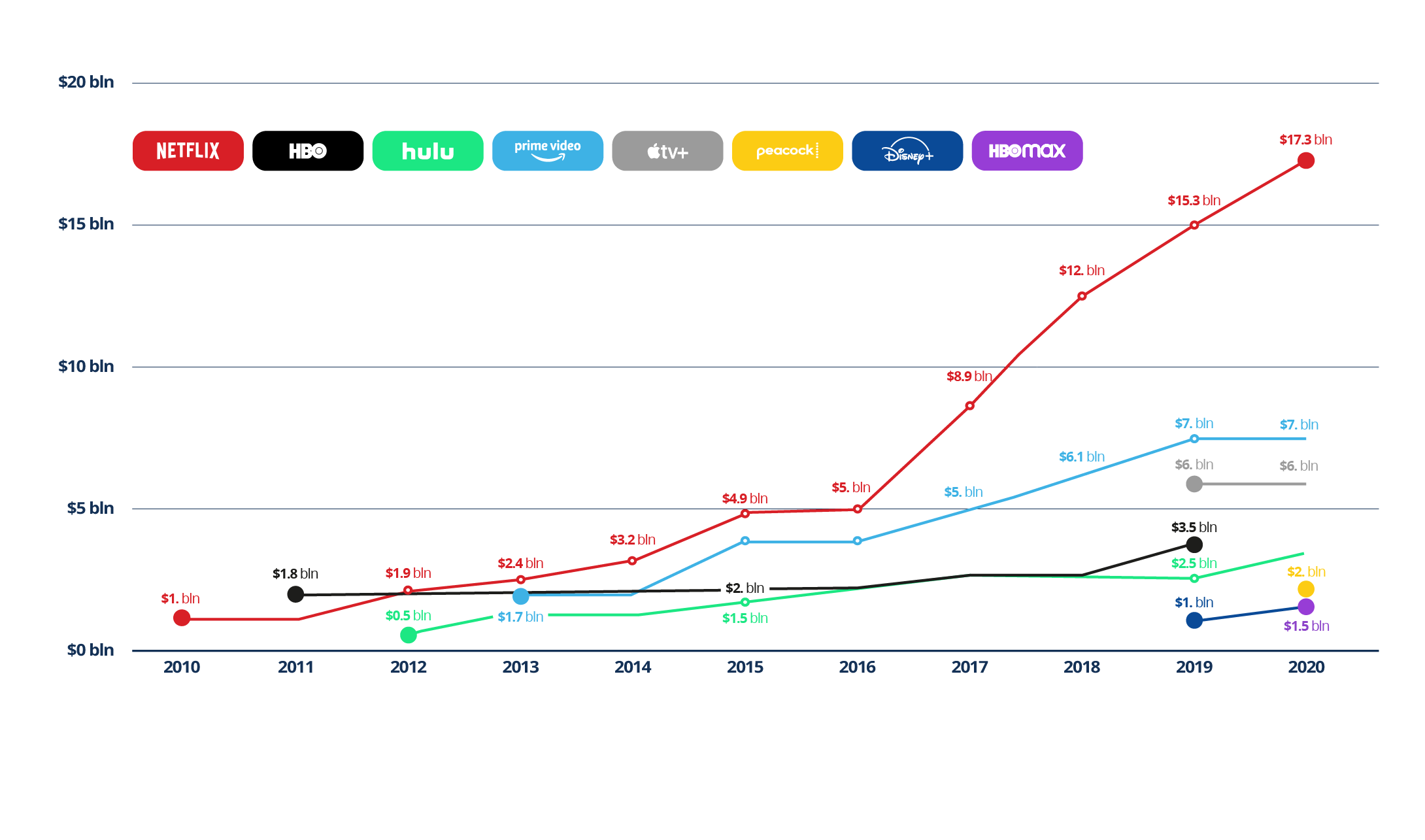‘The next medium, whatever it is— will include television as its content, not as its environment, and will transform television into an art form.’
- Marshall McLuhan, 1967 -
Media theorist Marshall McLuhan made the above prediction in 1967, cut to 2021 where Subscription Video On Demand platforms (SVODs) have become the internet’s content suppliers, with each spending billions in the war for our attention.
We have to ask, is original content creation the new artform? And if so, is the sky the limit for original programming spend?
Netflix is the OG of the SVODs - in early 2008, the company (which previously simply rented DVDs) gave access to its streaming library, allowing subscribers unlimited use, at no extra cost, to its entire suite of content. This changed the game of television forever. Its impact was felt by every single company that owned media content, creating almost an entirely new sub-industry in the process. Suddenly we were able to watch TV shows when we wanted and, more importantly, watch as many episodes as we wanted to at one time.
In this access-on-demand world we live in today, we’re offered a plethora of choice, from an ever increasing range of SVODs. The amount being spent on content production is greater than it has ever been, with Netflix alone predicted to spend over $17bn on content this year, in an attempt to protect its market share from ever increasing competition. The content arms race is here to stay. Netflix (and others to a lesser extent) is hugely reliant on content creators (rarely creating in-house content) which has perhaps inadvertently revealed a new less conspicuous form of art. The key to the SVODs’ growth has been their commissioning of original content. ‘Original’ content is the key word here.
Finding the value in the streaming world of today
We ask, what makes art so valuable? Claude Monet, for example only ever produced c2,000 art pieces, with millions of tourists visiting Paris to catch a glimpse of the Frenchman’s handywork. Whilst Picasso’s masterpieces have continued to skyrocket in price as they become increasingly rare, now fetching over $100m. Another interesting artistic comparison is the Pop Art era, with its rejection against the status quo, and the elitism of contemporary French and Italian art. This style became known as art ‘for the masses’. And there is a similar shift in power taking place in the streaming wars today. The viewer’s overwhelming choice has turned the power dynamic on its head. Previously this dynamic was linear, one (the broadcaster) to many (the audience), and if you missed a show you would have to wait till the re-run.
Original content is key to grabbing market share
In today’s world we choose what we want to watch and when we want to watch it. Content is well and truly king. Original content is designed to appeal 'to the masses', with SVODs willing to pay whatever it takes to obtain the best content, content creators have become the artists of today. When Netflix first acquired the rights to Disney movies in 2008, it paid just $30 million; when it renewed that deal in 2012 it cost a whopping $300 million. When Disney moved to launch its own streaming service in 2019, CEO Bob Iger invested $2.6 billion just acquiring the technology for Disney+, with billions more spent on original content creation. In the streaming wars, there’s a land-grab for old and existing content, which has driven the price of these assets. Just like with Picasso’s masterpieces, as scarcity increases so does the price people are willing to pay. All of these SVODs are spending billions, because they believe original programming holds the key to their overall success. And each additional billion spent by one platform, accelerates the races to spend even more.
Exclusivity is once again becoming the name of the game.
Disney is making content increasingly exclusive on its Disney+ streaming platform, Netflix is winning awards left right and centre for its multibillion library of original programming, other studios like Warner Bros. and ViacomCBS Inc.’s Paramount are withholding rights to their content to carry exclusively on their own streaming services, and not to mention Amazon’s recent $8.45bn acquisition of MGM. The streaming wars are heating up, and the price tags for original content are leaving Picasso paintings for dust. We continue to see this segment of the market ripe for long-term growth.






Share